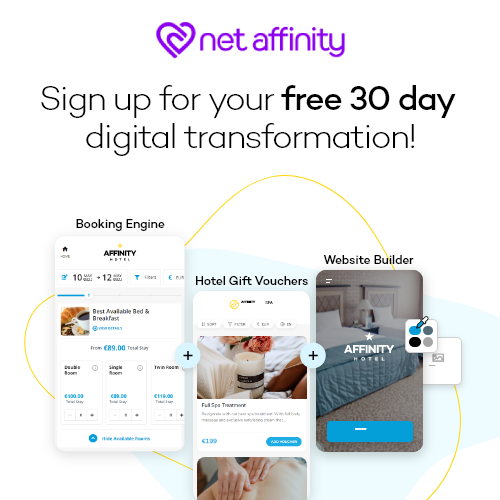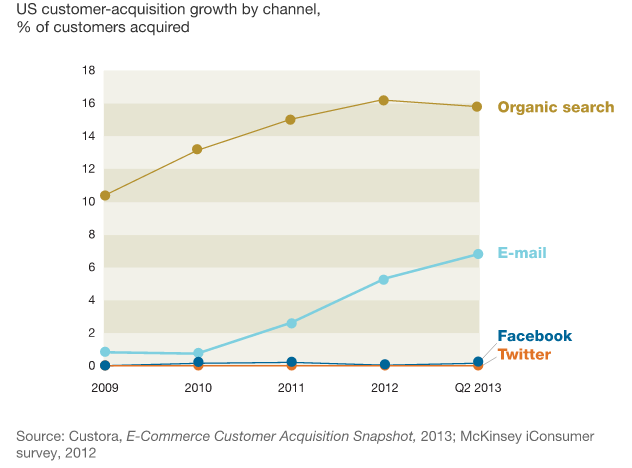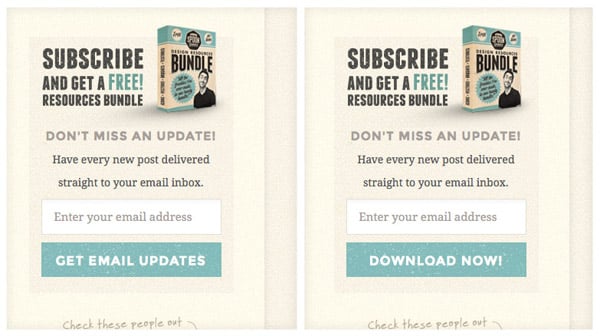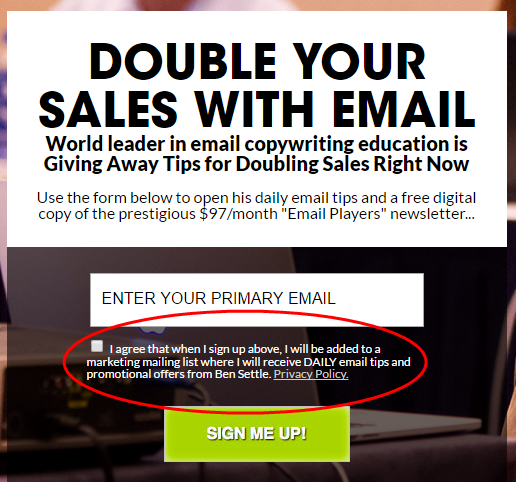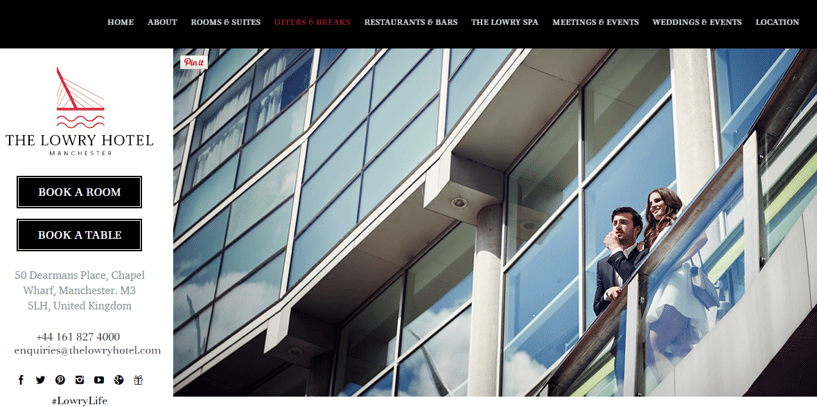Sometimes, all your hotel marketing strategy needs is a way for your hotel to break through the noise. Email marketing is a great tool to break through, and it has a track record of getting huge returns. We think that makes it pretty special.
Here’s the role email plays in getting your hotel website visitors to turn into guests:
Social media, paid ads, your presence on third-party sites and properly developed website content all drive traffic to your hotel website. Without a proper website funnel, however, that traffic won’t convert to the bookings you’re looking for.
Your hotel website’s funnel is made of:
- Your offering (rooms, services and facilities)
- Your Landing pages
- Emails
In turn, successful email marketing only needs 3 things:
- a strong email list
- emails that drive bookings
- long-term guest relationships
There are lots of small things you can focus on that will help you get those three things, but there are only a few fundamentals. Those fundamentals are what we’re going to talk about today.
Email can be a very personal way to reach out, and it’s also one of the fastest growing customer-acquisition channels out there. By the end of this year, it is projected that there will be 4.3 billion users.
Email is nearly 40 times more effective than Facebook and Twitter together in the acquisition of customers. It’s targeted towards people who already want what you have, and email is also under your control. Social networks are evolving rapidly, but the basics of email remain consistent, even as methods for sending them become more sophisticated.
Let’s take a look at those basics – sometimes, they’re all you need to build a strategy that will bring guests through the door.
Tell People What They’re Getting
The clarity of your message can get lost when you try to be too creative.
While getting subscribers for your hotel newsletter through entries to a competition or on your booking engine, it can be tempting to avoid words like ‘Subscribe’ or ‘Sign up’. We all get tired of being told to sign up to things!
Instead, you might try phrases like ‘Download Now!’, because those words work – at least at first. In fact, they can get 3 times more sign-ups. Some email marketers even like to avoid informing people that they have subscribed to their newsletter when they send the welcome email. Instead, they only provide information on the competition or the activity that led them to sign up.
But wait! When you don’t tell someone what they’re signing up for, your email list will be based on quantity, not quality.
Some of your brand-new subscribers will accept it, but some won’t – they’ll click the unsubscribe button, ignore you, or even report your email as spam.
So, what’s the best way to be straightforward?
Tell people they’re signing up in the microcopy below your signup box, and send new signups a thank you email telling them that they signed up to your newsletter or updates.
Tell them how often you’ll be sending, and give them a rough idea of what they’ll include. Will you be sending them news about your hotel or local events? Seasonal offers or exclusive vouchers?
When people who actually want your emails sign up to get them, your open rates and click rates will shoot up.
Be Hyper-Relevant
Your email list will have many types of potential hotel guests. These might include individual travelers, family travelers, friends traveling together, business travelers, corporate accounts – the list goes on.
If you write your emails for all of these people at once, your engagement and conversion rates will be low and you’ll lose a lot of valuable subscribers.
Instead, create different emails that will interest different types of people and send it to them separately.
To develop a relevant email marketing strategy, the first things you need are customer personas. You can learn more about how to create these by reading this post. After you have a few customer personas to work from, writing a message that caters to your ideal guest should flow naturally.
You can actually email the same tips and offers to all of them, but the angle you use should be something that relates with them on an emotional level. Tools like empathy maps can help you with this.
For instance, both business travelers and those looking for a quick getaway might be interested in a midweek deal, but they would be interested for very different reasons.
So how do you ensure that the messages you send is only received by your target audience?
List Segmentation
Instead of placing all your subscribers on one big list, you place them on several smaller ones. Each should contain a different audience type. How do you find out which type of customer someone is? When they sign up for the newsletter, try to get some additional information, like their age (consider asking for their birthday) or reasons for travelling. Asking too many questions discourages people from signing up, though, so don’t overwhelm your guests.
Sort Your Subscribers
You can sort your subscribers by ‘tagging’ them. Have different landing pages set up for different offers, and make sure each offer is targeted to a specific subset of your guests. For example, if someone signs up for a family break, you can have your email provider automatically put them in the ‘with kids’ segment of your mailing list.
To segment like this automatically, you need an email provider capable of doing that. There are more than a few solid ones that do this for very reasonable costs – one place to start looking might be GetResponse. You can tag people or move them to lists based on the action they take, like clicking a link or visiting a page. For instance, if someone clicks on blog posts about your restaurant or views the menu, you can have an email sent to them with a special offer for your restaurant.
Once you’ve segmented your subscribers, you’ll be able to send them the right messages at the right time.
Relationships Are the Future of Guest Interaction
The internet is drowning with marketing messages. So is your email inbox. If you check it right now, you’ll notice most of the emails are trying to sell something.
Too many email marketing strategies are based on constantly pressure to buy, without any focus on building a relationship.
You need to differentiate yourself from these people by building a relationship with your guests. Once you have a rapport with guests, you can send them marketing emails that give them deals and offers. They will be more likely to purchase from you over a competitor, because they trust you.
Message Match is Key
Message match is a huge factor for building conversions.
Rand Fishkin, founder of Moz, explains in the video below why it’s so important that the ads you use to promote your landing page look similar to the landing page they lead to.
Message match keeps guests from dropping off at various points of the booking funnel, because visitors will follow the message from the ad to the landing page. If your messages don’t match, it could confuse visitors.
You can learn more about message match here.
The same thing applies to email marketing. The images and copy in your emails should look very similar to the images and copy on pages they lead to. Be consistent with photos, design patterns and colours.
If you use animation, make sure it matches the message too. Keep it simple: animation should complement the ad, not drive attention away from the message you are trying to communicate.
The above screenshot is the offers page of The Lowry Hotel, Manchester.
While driving traffic to this page, your email you should have strong message match. You’ll need to ensure that your email’s design very similar to your offer page. The email should contain the same photo and similar design. For the Lowry, they should be using the colours white, black and red. You will also need to add call to action buttons that look just like the ones on that page.
Following all the above tips will ensure that your email marketing is an effective part of your funnel. They will ensure that your emails do what they are meant to: increase your revenue.
How do you use emails to promote your hotels? Any important email marketing tips you would like to share with us? Please leave your comments below.
